Slavonic Island and Sophies Palace
If you visit the Dancing House then when you look down into this part of the river you’ll see a weir. You may think that this is a fairly recent thing to control the river but actually there has been a weir here for at least 600 years. It’s a major reason why the Slavonic Island exists today.
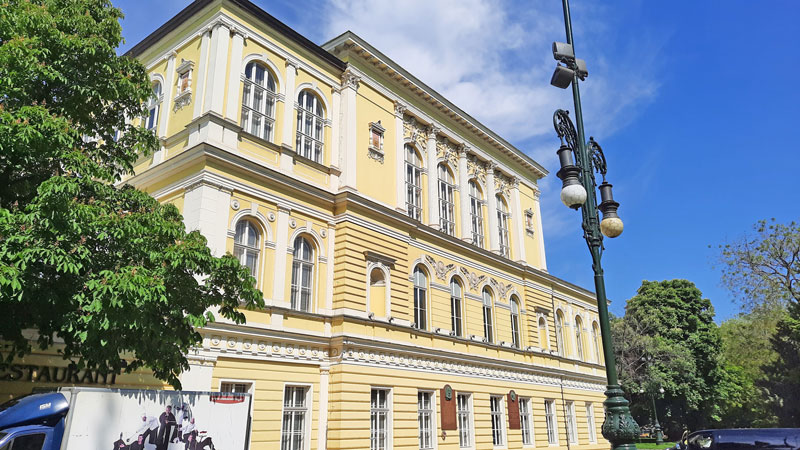
The Slavonic Island Today
I guess that the number one reason for tourists to come here is to see the Palac Zofin (Sophies Palace pictured above) but we’ll get to that later. A tourist will soon realise that you can’t actually get into the palace and so they are drawn to the associated lovely outdoor garden restaurant. There’s also a 180 year-old bandstand with a public toilet built under it and it’s a great spot on the river for hiring pedalos and rowboats. But let’s go back a few years.
The Weirs and the Mills
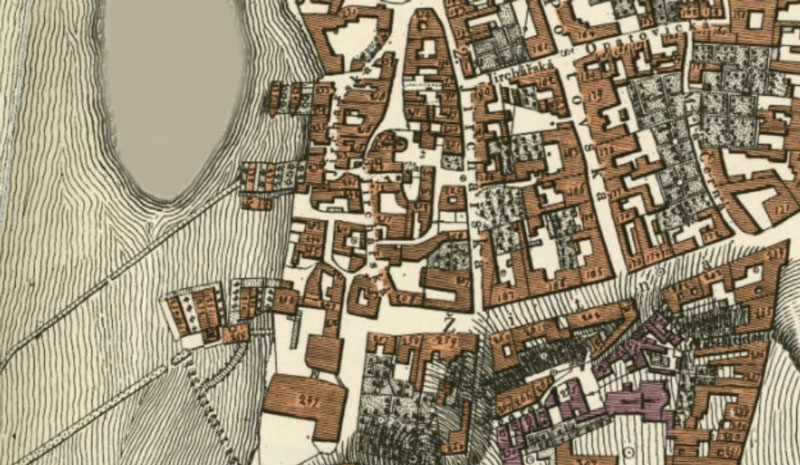
For centuries the Czechs have sought to control the river Vltava. They built weirs to divert water towards the riverbank because they’d learned to harness the power of the water by using…..the water wheel. This part of the river was alive with mills, what German maps refer to as “Schiffmulen” which are ship mills. To cut a long story short, as the water flowed through the mills the centre of the current was strong but the flow on the sides was very weak and this allowed ground in the water to build up. So over the next 400 years or so we basically get a huge build-up of silt which I’ve tried to simulate in the map above. This was made worse by various floods and then in 1780 by a record 5 floods in one year.
What to Do With the Silt?
A common problem all along the river. Do they dredge or do they enclose? In 1784 they decided to enclose this silted area with a stone ring to create an island. They planted trees on it to make it look better but it’s not called Slavonic Island yet!
Dyers Island
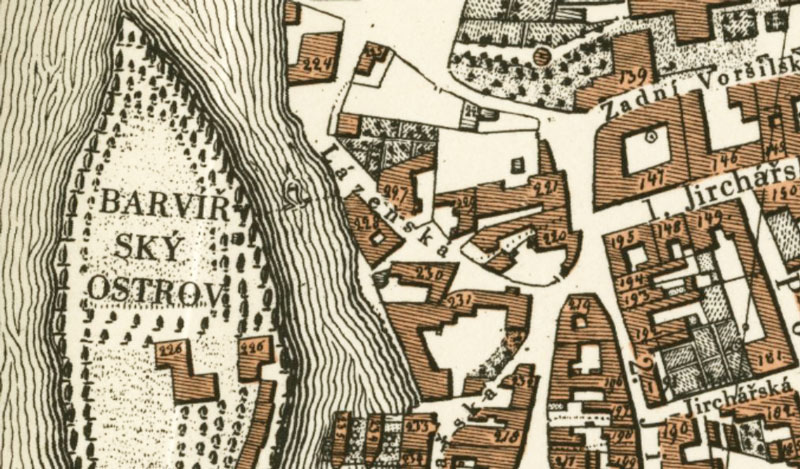
There was another profession in Prague as well as milling that needed tremendous amounts of running water and that was the leather tanning industry. Within 30 years of the island being created it had become home to Tanners and was known as Barvirsky Ostrov or Dyers Island. It had no road connection to the land, only a chain footbridge and the map above shows it in 1816 with the Czech name Barvirsky Ostrov.
Sophies Palace
By 1834 the island had been bought privately by a man called Vaclav Novotny and work had begun to turn it into a place of culture. Central to this was the building of a grand single-floor building (basically a huge ballroom with internal balconies) that opened in 1837 but it was still known as Dyers Island.
Then in 1840 it got a visit from the then Archduke Franz Karl, heir to the Emperor. The landowner graciously commemorated that visit by renaming the whole place after Franz Karl’s wife namely Princess Sophie of Bavaria. Not bad to ingratiate yourself with the man who would be Emperor. Unfortunately Franz Karl never became Emperor…but his son did. So Vaclav Novotny was known as the guy who named his island after the mother of Austrian Emperor Franz Josef I.
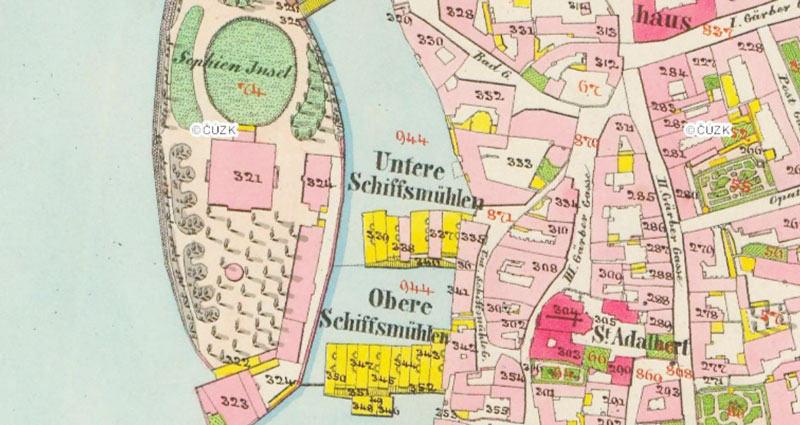
The German map above from 1842 shows the whole island called “Sophien Insel” (Sophies Island). Sophies Palace is building 321 and the small pink circle is the bandstand. The pink buildings on the right of the island held a restaurant, a spa and a residence which are no longer there. The island was now connected via a road bridge but it’s still not called Slavonic Island.
The 1848 Slavonic Congress
Still with me? It’s all kicking off with some strong personalities beginning to drive the Czech National Revival and dragging everybody else along. By everybody else I mean every ethnic Slavic speaking group of people in the Austro-Hungarian Empire which included Bohemia, Moravia, Silesia, Prussia, Poland, Slovakia and the Balkans. The Slavonic Congress included representatives from all these people and opened in Sophies Palace on June 2nd 1848 but had to be suspended because on June 12th a revolution started. Just to note that all these Slavic people used a common language to communicate…. German.
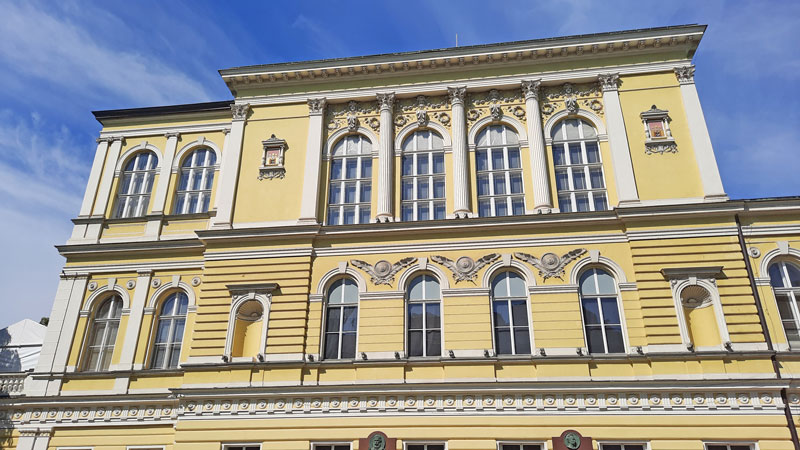
In 1884 on the centenary year of the island’s existence it was bought by the city and Sophies Palace was rebuilt into the neo-renaissance style that you see today. So now does it become Slavonic Island, no, not just yet.
After The First World War
Slavonic Island and Sophies Palace have both been regularly flooded over the years but essentially nothing has changed apart from the additions of a restaurant, boat hire facilities and a children’s playground. What did change was that at the end of the first world war the country kicked out the Imperialist Austro-Hungarian Royal Family and became a Republic in 1918. There followed a huge amount of building and street renaming and in 1925 some bright spark said “shall we rename Sophies Island to Slavonic Island”. It was agreed and the rest is history but Sophies Palace was never changed.
For Kids

There’s a playground for kids at the back of Sophies Palace and the restaurant sells ice cream. There’s also a mini railway (like 50 metres) and at the time of writing a ride was CZK10. That’s got some history as well because in 1841 there was a mini steam railway operating on Slavonic Island and the scaled down kids train engine version today is a copy of the original.
Something Related or a Few Minutes Away
Attraction – The Dancing House
Art and Culture – The National Theatre
Art and Culture – Laterna Magika
Art and Culture – Manes Exhibition Hall
